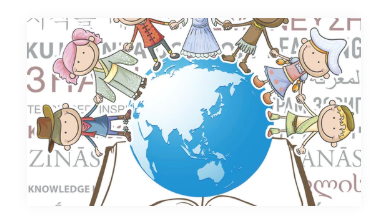Introduction to Multilingual and Multicultural Education free videos and free material uploaded by Higher School of Economics Staff .
Multilingual & multicultural education: introduction, historical development, concepts, dimensions This module will introduce you to the basic concepts of diversity in education, describe the way multilingual education developed throughout the history, and present its dimensions.
Diversity and education: culture and language in a global world This module will present you the historical background of multilingual education in the UK, USA, and Canada and show the way it is realized in the modern era.
Multilingual & multicultural education for young children
This module will introduce you to the basic ideas of Early and Late Second Language Learning, as well as give an insight into language immersion programmes for young children.
Policy and Planning in multilingual & multicultural education
This module will show you the correlation between power and ideology and language policies and analyze the factors that contribute to the formation of language policy and planning in education.
The teacher and the student in multilingual & multicultural education
This module will analyze the role of a teacher in a multilingual and multicultural classroom, evaluate teacher education in Europe and in North/South America and distinguish between different models of bilingual education.
Practice in multilingual & multicultural learning space
This module will analyze the role of parents and community in multilingual learning.
The education of ethnic and cultural minority groups
This module will help you understand the complexities of minority group education and present educational programmes that contribute to equal education opportunities.
Opportunities, challenges and paradigms in multilingual & multicultural education
This module will assess paradigms and prognose future directions in multilingual/multicultural education.
CONCLUSION
The time has come to see how much you have learned during the course.
This course designed at HSE University gives insights into the importance of multilingual learning in the linguistically and culturally diverse world. It is based on recent studies and case discussions.
Several important questions are tackled during the course:
• At what age should children begin to learn a second language?
• Do bilingual and multilingual children show better performance at school?
• How to distinguish between favorable and unfavorable language and education policies?
• How are multilingual and/or multicultural classes different from usual ones and what obstacles do teachers and students have to deal with?
• How can institutions enhance multicultural and multilingual education process?
After finishing this course, the students will develop the following skills:
• assess different teaching methods used in multilingual and multicultural classrooms;
• assess different language approaches and organizational tactics employed in multilingual learning environment;
• gain deeper understanding of the demands pupils have in a multilingual/multicultural classroom;
• apply the theory from the online lectures in multilingual/multicultural classrooms;
• work with the immigrant students or those who have a minority language as L1.
This course will be useful primarily for teachers, students specializing in education/language and linguistics, researchers in language/education policy as well as for those who want to grasp the multilingual approach. The topic is of great interest now as globalization has an impact on different areas of our lives, and it can bring benefits, especially to those who are flexible or try to improve/alter their career.

- 0 Reviews
- 0 Students
- 75 Courses

Write a public review